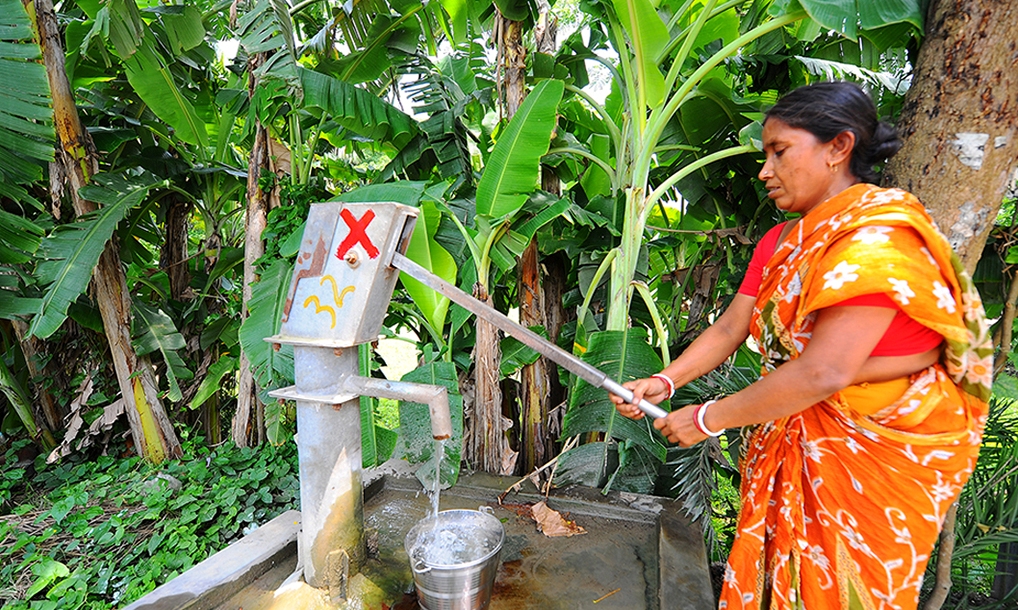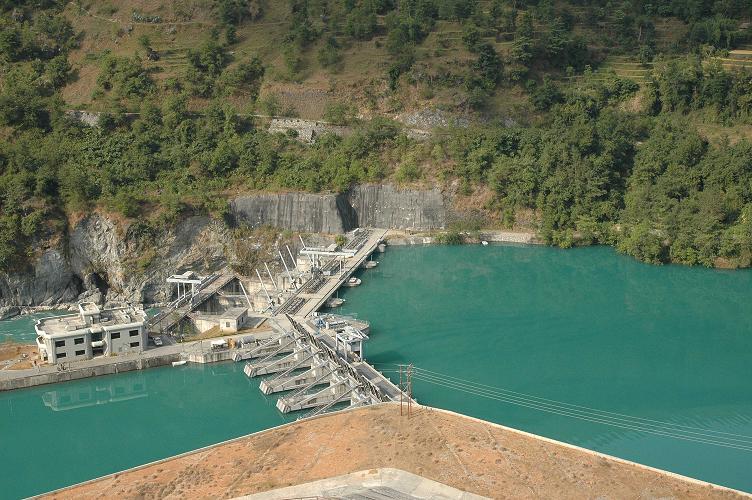No woman no water, so women must decide
- Farahnaz Zahidi

Bangladesh has managed to almost stop open defecation because women were included in the decision making processes

They carry water home, store it, keep it as clean as possible. Yet women are kept out of major decisions about water supply.During this year’s August 27-September 1 World Water Week in Stockholm, experts focussed on an age-old problem – how to recognise and value the central role that women play in solving all water related issues.
Tracing the recent history of this attempt, Ankur Gupta of the Global Water Programme told , “You can look back at Dublin 1992 principles that state clearly [the need for] the involvement of women in water management. There is a lot of evidence coming up pointing in the direction that exclusion of women is harmful, especially in WASH (water, sanitation and hygiene).”
Particularly in South Asia, Gupta commented, it is necessary to involve women in decision-making about water supply, starting at the household level. “To fall back on clichés, this helps women in terms of self-esteem and confidence; better water management gives them more free time to engage in other activities. Most importantly, WASH and water management activities need to be monetised and recognised. But for that, the required political will is missing.”
He suggested specific remedies – providing scholarships for women to study water related professions, quotas for women to take up roles on boards and committees and provision of menstrual hygiene management facilities.
Wherever women have been empowered to decide on issues of water, sanitation and hygiene, the results have been excellent. Akramul Islam, Director of the WASH programme in Bangladesh Rural Advancement Committee (BRAC), said this was why the country has recently succeeded in controlling open defecation.
See Open defecation ends in Bangladesh – almost
“Women in rural areas are vulnerable when it comes to the use of latrines,” Islam pointed out. “BRAC’s participatory rural appraisal started including both men and women; this helped us know for sure at which new points latrines are needed and what their design should be [according to gender-specific needs], because it is often unsafe for women to walk far to use the toilet.”
In this programme, BRAC gives leadership training to one male and one female from each community. “Slowly, women have started voicing their opinions and that is very encouraging,” said Islam.
Who carries water home
BRAC has another big first – it is working on making water carrying a shared responsibility of men and women. Women carrying water home is a practice so ingrained in South Asia that it is almost a taboo to think otherwise. But BRAC is doing just that.
“We are motivating men to collect water so that it is no longer seen just as a woman’s responsibility,@ Islam told, “To counsel the communities [especially the men], we have brought the village Imams (clergy) on board. We counsel them and provide them small booklets with information they can disseminate through Khutbas (sermons).” Attitudes are slowly changing, he is confident.
“Urban women are some of the greatest water wasters,” feels Muhammad Ashraf, chairman, Pakistan Council of Research in Water Resources. “They should be involved in the WASH sector and water conservation at the domestic level.” If women are included in decisions pertaining to WASH, the women themselves, and their children, would be the first to benefit from it, Ashraf pointed out.
The level of education and awareness among women has a direct impact on WASH, says Pervaiz Amir, director, Pakistan Water Partnership. “Women in Kashmir’s rural areas are [relatively] educated; they give high priority to investment in toilets. On other hand, the situation in Tharparkar and Cholistan is bad due to a lack of education. By engaging women in public services and increasing their job opportunities (we) can have a direct impact on sanitation and hygiene services.”
The ill effect of not educating women about water is seen in the photograph at the top of this page.
Pointing to the link between sanitation and nutrition, Amir also emphasised the need to have women “closely tied to all household-related water decisions. They collect water and regulate the level of usage. When women are excluded, the results are poor, leading to even social disharmony and conflict.”
The good thing in all this is that there is an overall increase in the attention to gender gaps in many spheres, says Maitreyi B. Das, global lead, Social Inclusion, at the World Bank. “This year, World Water Week in Stockholm has made a concerted effort to have more sessions on gender issues. I think there is a greater realisation that SDG6 will not be met unless we focus on men and women separately and together.” She was referring to the UN Sustainable Development Goal to ensure availability and sustainable management of water and sanitation for all by 2030.
Das is the lead author of the recently launched World Bank report Harnessing a Rising Tide: A New Look at Water and Gender. After talking about the particular need for inclusion of women in water management in South Asia, she added, “As our recent report notes, overall gender inequalities are mirrored in water related domains. We will neither achieve our water related goals nor our goals for gender equality unless we address gender in everything we do, in every sector.”
Source:thethirdpole.net





Feedback